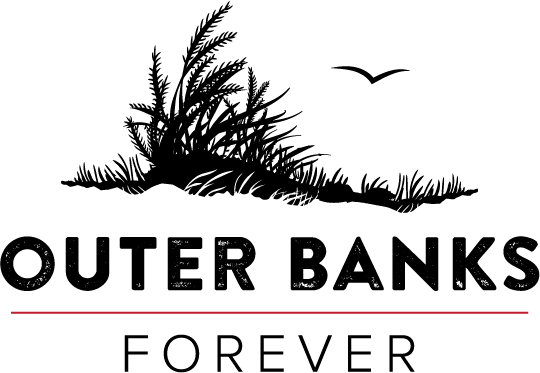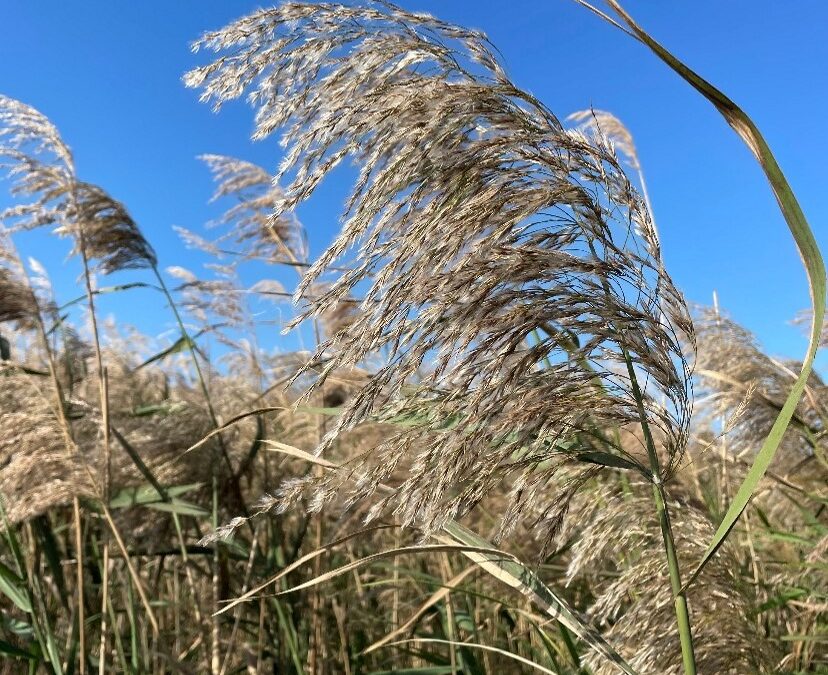Invasive Plant Profile: “The Mighty Phrag” (Common Reed, Phragmites australis)
By Megan Baker, Biological Science Technician at Cape Hatteras National Seashore
What is Phragmites (Common Reed)?
Common Reed (Phragmites australis), or simply Phragmites, is a well-known and easily found perennial grass species that is thought to be one of the most widespread plants in the world.
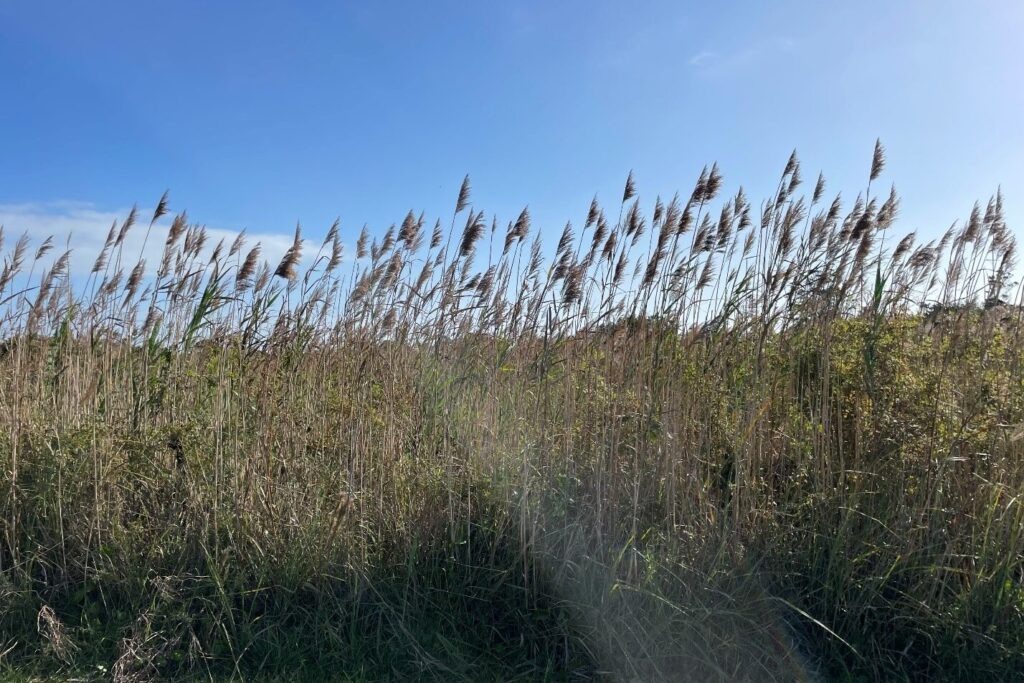
It is a 6-to-12+-foot-tall erect grass that remains standing all year long. In the spring, long dark green leaves grow quickly and create dense stands. By the late summer, the inflorescence is produced with long plumes at the upper end of the stalks and contain feathery, fuzzy seed heads that sweep to one side and are dispersed in the wind. In late fall and winter, the plant turns entirely brown as the nutrients move into the rhizomes. The roots or rhizomes extensively spread through the ground and are the main source of reproduction for this grass.
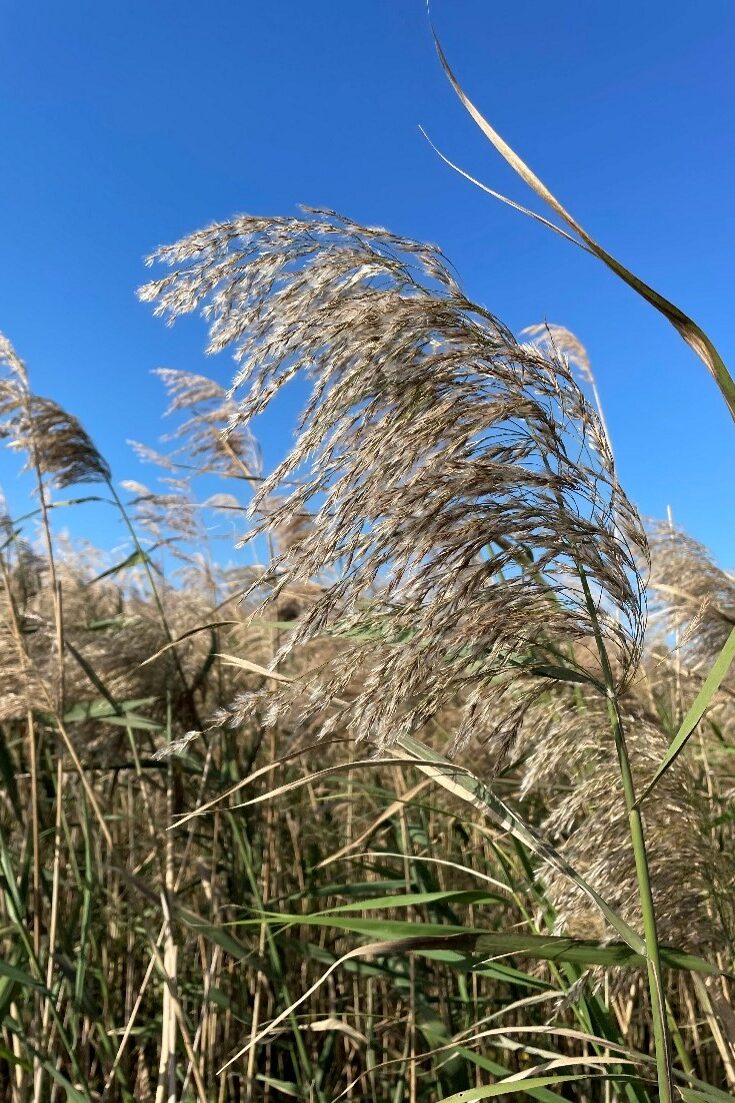
Phragmites is native to the Middle East, but likely was introduced to the United States in the 1800s on ballasts of ships from Europe. It was first established along the Atlantic Coast and then spread quickly across much of the United States throughout the 20th century. A native variety of Phragmites was originally found in much of the country, but it has been greatly displaced by the invasive European strain.
Where does it grow?
Everywhere! Well, almost everywhere, and you’ve likely seen it. Phragmites is an incredibly widely distributed flowering grass and has ranges all over the world except Antarctica. In the United States, invasive Phragmites can be found in wetlands of all lower 48 states. While it prefers marsh-like habitats, it can grow in and near fresh and brackish waters along marshes, streams, ditches, and ponds. Many areas of invasions correspond with disturbance or development of natural areas as these have high soil and nutrient input that allow Phragmites to spread quickly.
In North Carolina, Phragmites can be found on much of the eastern half of the state, especially the Coastal Plain. Here at Cape Hatteras National Seashore, Phragmites is found on many soundside areas, in roadside ditches, and along ponds or drainage areas. It can be found on all three islands (Bodie, Hatteras and Ocracoke) of Cape Hatteras, especially along Highway 12, and at Fort Raleigh National Historic Site on Roanoke Island in varying degrees and densities.
How does it impact Cape Hatteras National Seashore?
Like all invasive species, Phragmites is a non-native species that grows prolifically and has impacted the native ecosystems negatively. It has been very successful in creating dense stands that outcompete and inhibit growth of a variety of native marsh grasses. In addition to outcompeting native grasses, a monoculture of Phragmites also lowers productivity of the entire ecosystem. Less and less options of preferable habitat and food sources are available which creates a lower diversity of birds, crustaceans, reptiles, and mammals that can utilize the marsh to forage, nest and live. Phragmites also alters hydrology in wetlands as the extensive root systems and dense stands may reroute or stall water flow over time. The tall, long-standing stalks also provide easy dry fuel during droughts and may increase the potential for fire.
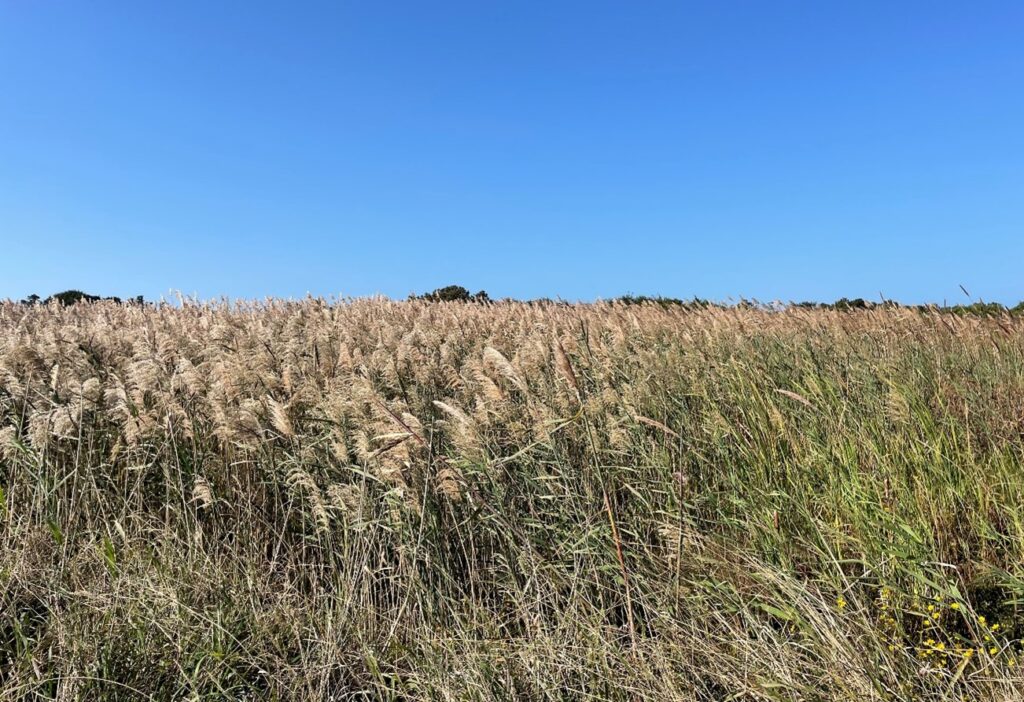
Many bird species like sparrows and blackbirds depend on a diversity of grass seeds throughout the year for food, but Phragmites inhibits other grasses and lowers the food variety in an area. Waterbirds and waders, like egrets and herons, as well as diamondback terrapins in the marsh may be deterred from nesting as they are not able to navigate through dense grass stands. At Cape Point in Buxton, Phragmites stands along the dredge pond (or salt pond) could negatively impact important shorebird foraging habitat. The open mudflats of the pond provide easy access to food for shorebirds as they migrate and during nesting season in the summer. As Phragmites takes over the area, less and less preferred habitat is available to have a sustainable amount of food. This is an area of concern for our resource management and treatments here are prioritized to protect threatened and endangered species like the Piping Plover.
What are the treatment methods used for Phragmites?
Here at Cape Hatteras National Seashore, our first step in the treatment of Phragmites is identifying and mapping areas of infestation. By mapping areas of Phragmites, it gives us an idea of how much effort (i.e., the number of people and time) is needed to complete a full treatment. It also gives us a baseline to track the infestation or spread of Phragmites over time. Using additional funding from Outer Banks Forever, we were able to search for and map Phragmites patches throughout the park in the cooler winter months. Mapping is done on foot using a GIS application on a cellphone and provides a visual acreage using polygons. Currently, there are a little over 200 acres of mapped Phragmites on park property!
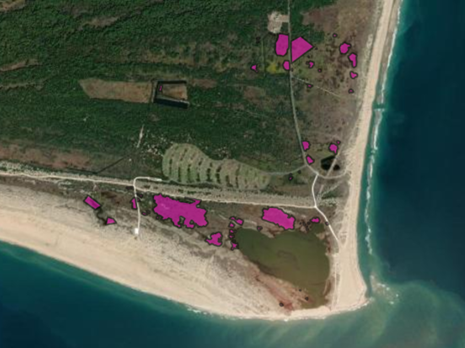
There are multiple treatment methods for Phragmites, all of which are costly, labor intensive, and take time. Grass species receive a foliar treatment of chemical to their leaves when green. So, for Phragmites, an herbicide is sprayed onto the leaves using a backpack sprayer while walking through the stand. Special care is taken to only spray target plants without runoff or drift to other non-target plants. Weather and wind are also huge factors in planning applications so that the chemical can stick to the plant long enough to be absorbed. The herbicides used are usually glyphosate or imazapyr based and are most effective in the summer and fall while the leaves are still green. The chemicals stop growth above the ground to reduce the amount of seeds produced and spread.
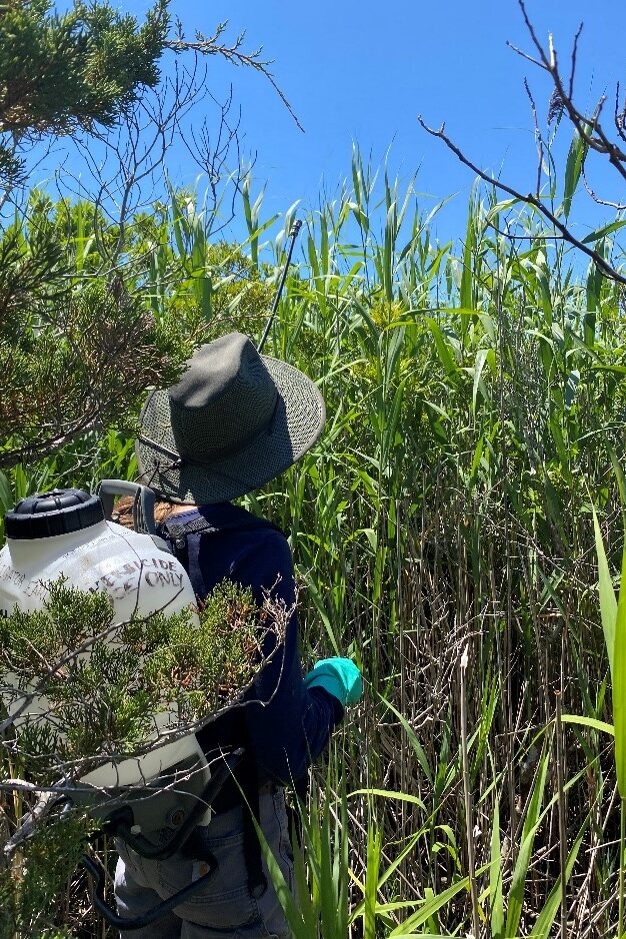
Consistent and successive treatments are necessary from year to year to control Phragmites effectively. Phragmites is extremely hard to eradicate completely, but “control” is the name of the game to reduce more damage. The rhizomes are hardy and are usually not affected with just one chemical treatment. This is where our efforts to map stands before treatment come into play as they can show whether the treatment is working overtime or not. Prescribed burning and manual cutting of Phragmites stands are two other treatments that are not currently being used at Cape Hatteras National Seashore but can help over time to lessen the dead stems and provide space for native plants to revegetate the area. While there are many, many acres of Phragmites at Cape Hatteras National Seashore to treat, other groups such as American Conservation Experience (ACE) and Invasive Plant Management Team (IPMT)crews also provide help to our team to tackle this invasive species together.
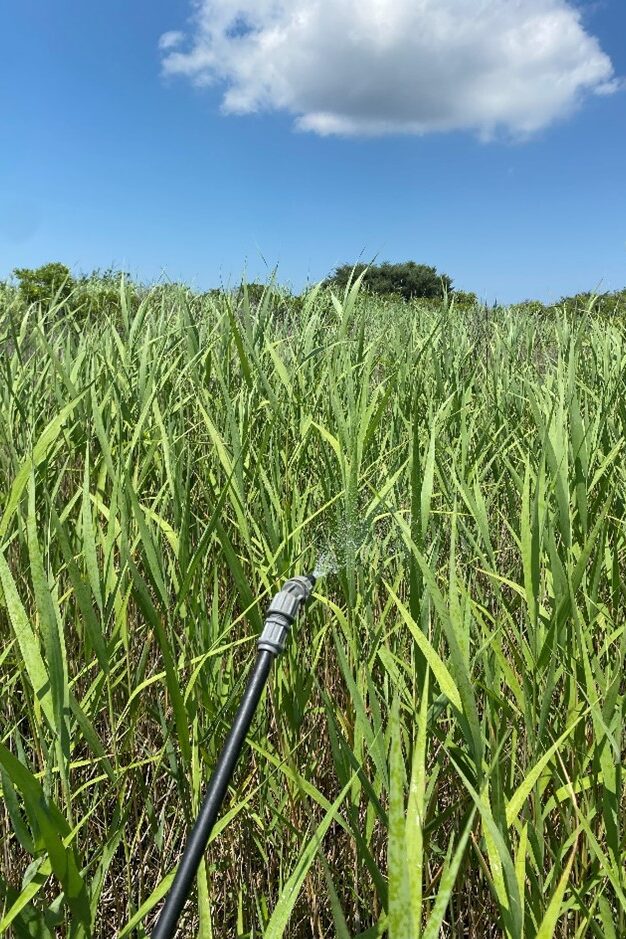
Think native and stop the spread!
While many people do not intentionally plant Phragmites and it was accidentally brought to the United States many years ago, it is always important to “think native.” If you want to remove invasive Phragmites, know that it will take some time, knowledge, and a little hard work. The first step is to do research to be able to identify native vs. non-native plants before making decisions. Many other native species of tall grass may look similar to Phragmites but will likely not be found in such large dense stands and have differing plumes when in bloom. Then, when choosing natives or replacing invasive species after treatments, research the kinds of plants that are local to this specific area: the Outer Banks! There are many native grasses such as Giant Cordgrass, Southern Cattail, or Giant Plumegrass that provide coverage, tall, beautiful plumes, and can spread throughout an area that would be great along waters edges. Luckily though, in most wet areas a variety of native grasses will naturally revegetate without replanting.
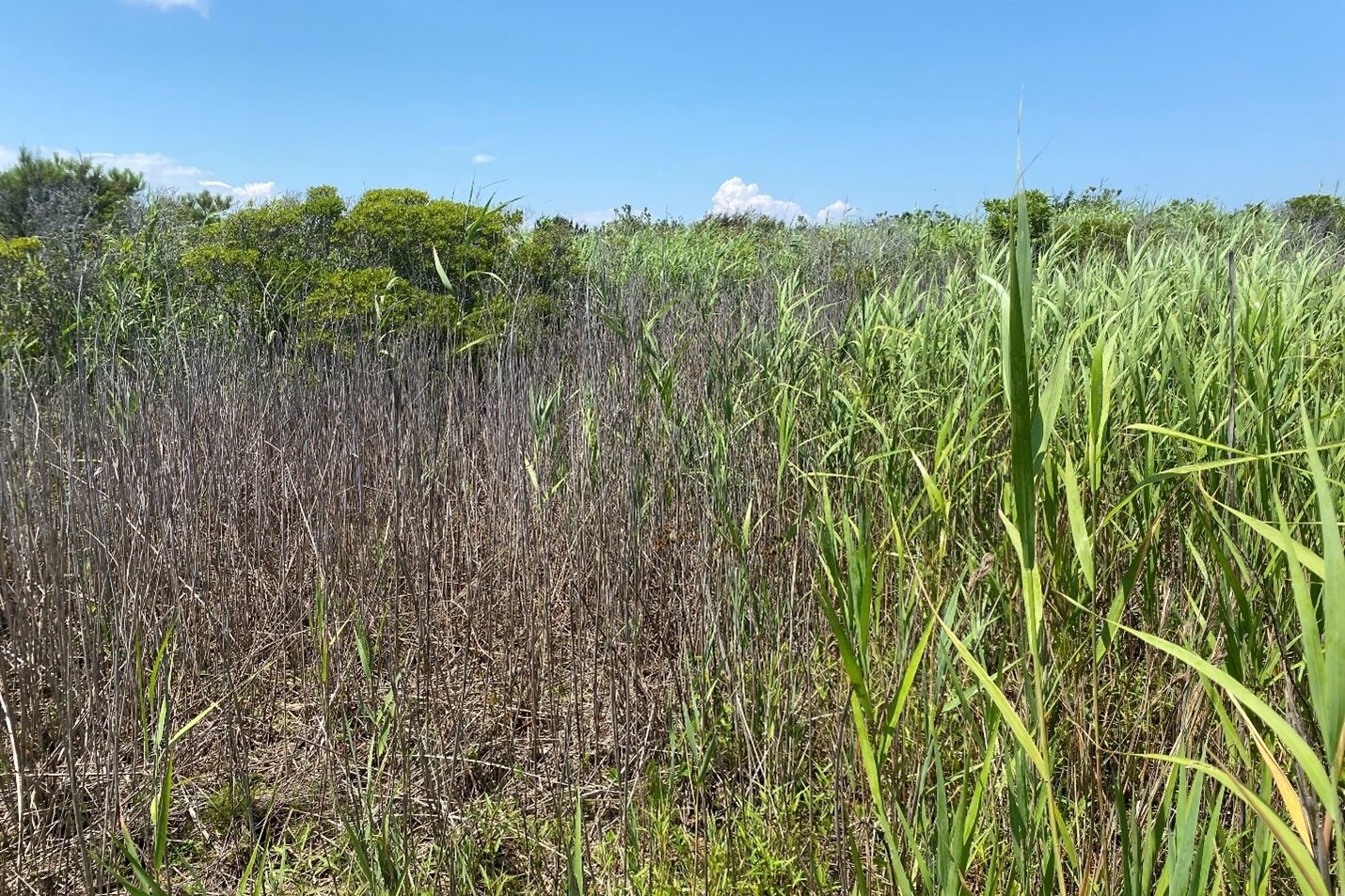
Another important factor in “thinking native” is ensuring that you are not transporting or disturbing seeds or roots of invasive plants which promotes their spread. Transport of seeds can happen from boats or even on your shoes and the simplest way to ensure removal is by giving any possible transport items a quick rinse or brush off before moving to a new location. Cutting down Phragmites is not effective alone as their roots are very hardy and when cut or disturbed, they may grow faster. Remember, the complete removal of Phragmites must be consistent and thorough to be successful. It’s a mighty task for a (phrag)mighty plant!
About Megan
Megan Baker has worked at Cape Hatteras National Seashore as a Biological Science Technician since 2017. She worked in the Hatteras District as a seasonal for multiple years and is now a permanent employee. Her favorite part about Cape Hatteras is the diversity of wildlife and plants; there’s always something new to find or learn about! She also loves being able to work outside on the beach each day, which sure beats an office! Before working at Cape Hatteras, she worked at Gateway National Recreation Area in New York working on marsh islands in Jamaica Bay. In her spare time, she enjoys spending time outside with her dog Jade and birding.
